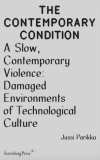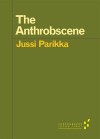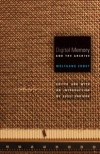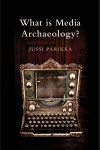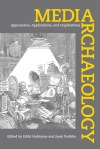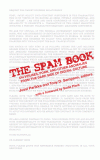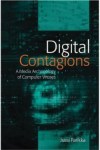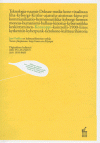Archive
The Lab Book is out!
I am very happy that our co-authored The Lab Book: Situated Practices in Media Studies is out. Written with Lori Emerson and Darren Wershler, the book stems from research that started around 2015 and investigates the changing status of the lab as it features especially outside the fields of science and engineering. The mushrooming of labs of all sorts – and not all only academic, as many coffee labs, brew labs, and hair labs testify – has resulted in a situation we refer to as the hybrid lab. The many aspects that make up the hybrid lab are captured in this diagram on the extended lab, a model that also guides our book’s chapters

We are also grateful for the several dialogues, interviews, and other help that several people affiliated directly or indirectly with labs provided. We were able to test our ideas and get really important feedback from so many different lab setups that also showed the many scales of labs. Some of the interviews are available on University of Minnesota Press’ Manifold platform.
Do get in touch with any queries, review copy requests, or alike.

“Lively, timely, and filled with vivid examples, The Lab Book is a highly readable and critically sophisticated account of current lab culture. Written by three distinguished practitioners, it examines the rhetoric that links real and imaginary ideas of experimentality with systems of power and authority across a surprising range of disciplines. A fun, smart, useful guide to ongoing work in media studies.”
— Johanna Drucker, author of Visualization and Interpretation: Humanistic Approaches to Display
“The Lab Book makes an extremely important contribution to contemporary discourse about the production of knowledge. In many ways, it is the most important book on the topic since the laboratory studies of Bruno Latour in its potential reach across disciplines and methodologies. Its careful close reading of images and quoted material is particularly compelling, and the writing style is accessible and clear, even while explaining somewhat arcane topics in science studies around infrastructures, apparatuses, ideologies, and assemblages.”
— Elizabeth Losh, author of Hashtag
A Lab of Labs
AMT was again part of the Istanbul Design Biennial, this time together with Bilkent University (Ankara) hosting a workshop and a panel. We responded to the main theme of School of Schools with our own emphasis: a lab of labs. In other words, working with the Bilkent Media Archaeology Lab (led by Andreas Treske) we organised a two day event that performed a lab in as a method to investigate it as a assemblage of methods, techniques, affordances of the lab in an urban environment and in the context of Istanbul, a city with a long heritage of crafts, workshops, and design irreducible to a sanitized design thinking discourse.
Benefiting from the experience of Ege Berensel and Başak Altın we engaged in workshopping that included 8 mm found footage (home films) and motherboards (as a source of circuit bending and tinkering). While Ebruk Kurbak joined us to talk about her work in textiles, computing and material methodologies in speculative design, and Tuğçe Karatas shared her views as an independent curator, our special surprise guest was the local TV repair shop expert who gave us a two hour crash course into his work and electronics! The lab includes many kinds of expertise.
The workshop was also part of the research for #TheLabBook – online at What is a Media Lab?.
 Andreas Treske’s opening words, together with Björk’s poetic exploration of the television.
Andreas Treske’s opening words, together with Björk’s poetic exploration of the television.
 Başak Altın and Ege Berensel, artists from Ankara, were part of the work. Here Basak narrating a short visual history of motherboards.
Başak Altın and Ege Berensel, artists from Ankara, were part of the work. Here Basak narrating a short visual history of motherboards.
 An unpicking of a video projector into its material-epistemic components, measurable as objects of interest, unfolding multiple levels of media archaeology. #OfficeTruisms
An unpicking of a video projector into its material-epistemic components, measurable as objects of interest, unfolding multiple levels of media archaeology. #OfficeTruisms

Labs as hands-on practice.

A short introduction to electronics – from the perspective of repairing televisions and other appliances.
On Disobedient Electronics
Here’s a short manual to what design can – and perhaps often, should – be about: “how to punch Nazis in the face, minus the punching”.

Garnet Hertz’ new critical design zine Disobedient Electronics is a quick and rough, inspiring and useful manual for the Trump, Brexit, post-truth era that needs to address forms of actually working resistance that don’t however merely function only in the realm of already designated possibilities. Hence, throw in a good chunk of speculative design imaginary.
The protest zine is a collection of feminist and other social justice driven projects that carry forward a particular legacy of speculative design that is, in Hertz’s words, slightly less RCA/Dunne & Raby-style than it is confrontational and imaginary in the manner of the Critical Art Ensemble and the Yes Men. The selected projects cut through issues that tell a particular story about North America but also other geographic regions and political realities: issues of gun control and campus carry, gender pay gap, street protest kits, right to abortion, digital privacy and encryption feature centrally. Many of the projects appropriate a seemingly militant form: the Transparency Grenade, the sound cannon in the Device for The Emancipation of the Landscape and the I.E.D. (Improvised Empathetic Device) carry references to forms of violence that are however overturned into devices of creating alternative worlds. Sometimes the devices cross borders such as the Abortion Drone (Women on Waves & Co.) as a particularly inspiring way of diving into the issues of women’s rights across what is far from a unified political space of Europe.
The style of design proposed through the zine and the projects leads the reader to think of Brian Massumi’s ontopower: “a power that makes things come to be: that moves a futurity felt in the present, into a presence in the future.” This sort of a stance to design is useful as well as speaks to the sort of experiments Disobedient Electronics employs. And the projects that are featured are in many cases experiments in their own right – not only in terms of a device that is pitched and presented but as experiments in collective forms, imaginaries and situations. In many ways, you can observe how this fits in with the wider context of Hertz’ own work and The Studio for Critical Making at Emily Carr University of Art and Design, which he describes as a lab of sorts that combines research, humanities and building in ways that results in “technology that is more culturally relevant, socially engaged, and personalized.” Disobedient Electronics is a good example of such work that the project supports both in the space of the studio and in the context of wider discussions about the role of speculative critical practice.
The Residual Media Depot summer school
I had the pleasure of being one of the participants in the Media Archaeology summer school in Montreal at the Residual Media Depot (Concordia). Invited by Darren Wershler, and teaching alongside also Lori Emerson, we had a wonderful group of participants from Canada, Finland, USA, UK and Spain whose own projects and their work at the Depot during the week demonstrated a fantastically broad spectrum of what media archaeology can perform.

I could not emphasise the word perform enough: while we engaged with the theoretical limits and limitations of theoretical work in and around media archaeology, including how it interfaces with for example infrastructure studies, the various probes the students presented and the hands-on work in the Depot investigated the idea of collections as part of the methodology. The performative aspect of media archaeology – and theory broadly speaking – allows to both see it as a situated practice that benefits from its access to institutions and collections as well as creates the space for such to exist: to imagine a media archaeology lab or a collection becomes also a projective way of engaging with the current themes of reshifting humanities infrastructure and institutional changes. As Wershler and Lori Emerson, the director of the Media Archaeology Lab at Boulder, Colorado, also underlined, it is through the particular materiality and access to collections that one can think differently in relation to what are often deemed objects of (media) cultural heritage.

Relating the course’s themes to also his own research, Wershler explained how his interest in the cultural life of signals builds on work in the Depot too. To engage in the work of assembly through old but still functioning systems one is led to understand the various ways the life of signals is constantly constructed and re-constructed across multiple fields of agency from hobbyists to the mini-industry building the various technological tools for an afterlife of for example consoles.
Media archaeology embodies multiple temporalities. The different theoretical frameworks from Erkki Huhtamo to Siegfried Zielinski to Wolfgang Ernst are different solutions to the problem of time – how to approach time differently in methodological ways and in ways that understand technical temporality. For example, Ernst’s ways of approaching time criticality and temporal operationality are something that both offer a different ontological take on technology and also can act as interesting guides in how we work with collections such as the Depot.
In my view, the Residual Media Depot was a perfect platform for the workshop. Wershler had designed the week as a mix of theoretical investigations, student probes and practice-based work that functioned somewhere between maker methodologies, art practices and an archival interest in collections that are important for media theory too. The collection is focused on cultures and technologies of gaming with a special focus on consoles, but as Wershler emphasises, it is not a game archaeology depot. The consoles and the material around them is an entry point to media history and signal culture.

In several ways, the Depot’s work aligns nicely with the Media Archaeology Lab but also with our AMT group: to establish a framework and an enabling situation for a research-teaching continuum that is interested as much in practice-based work as it is in explicating what practices of theory are. All of this feeds also as part of the Lab Book we are writing together.
You can find more information about the Depot on their website and on the same site you can find all the student probes from our week of Media Archaeology.
The Residual Media Depot (RMD) is a project of the Media History Research Centre in the Milieux Institute at Concordia University.

The Mediocene And the Lab Scene
The Mediocene conference takes place later this month in May in Weimar. Organized by the IKKM, the conference picks up on the Anthropocene from a specific media-focused vantage point. In the organizers words, “The concept of the Mediocene […] sees media and medial processes as epoch-making. As a determining force, they leave their permanent imprint on the world, affecting animate and inanimate nature alike — human existence, technology, society, and the arts as well as the shape, organization and history of the global habitat itself.”
My take draws on our current laboratory-project, and below is a short (draft!) text of the beginning of the talk still in the process of writing and without a full range of references. The idea of the talk is to set the laboratory as this particular term, an imaginary and a fever around which multiple scales of planetary media come to the fore. It will also discuss topics especially in the art and technology-nexus including briefly the emergence of art labs in the Cold War institutions of technical media (a topic that will be well covered by Ryan Bishop and John Beck in their new work), as well as experimental work in the arts about the lab, including Bureau D’Etudes on the Laboratory Planet as well as probably such work as Neal White’s on post-studio. Any further thoughts, tips and ideas are warmly appreciated.
The Lab is the Scene
One could be forgiven for thinking that the world’s nothing but a lab. From endorsing the centrality of the factory as a key site to understand modernity and as the site of production, material transformation, commodity culture, labour relations, pollution and what not, the laboratory seems to have in some accounts taken a similar role. It speaks to a range of topics of media and culture: historically, a central place of inventing and engineering technical media; thematically, one crucial vantage point for the multi-scalar operations that define the tie between the planetary (dis)order and its situated practices. It does however come with a legacy that is only partly about the science lab. Indeed, the other important lineage relates to the technology, engineering and design/art labs that throughout the 20th century started to offer a parallel narrative: experimentation, a demo or die-attitude (at the MIT Media Lab, see for example Halpern 2015), prototyping, and more. Hence this lab story of experimental culture is not restricted to the science lab as if a separate entity from the arts and humanities; and in any case, the science labs of many kinds have already had their fair share of attention from social scientists and humanities scholars, even post-studio artists up until the recent days with the continuing enthusiasm for CERN residencies.
The proliferation of laboratories outside the strict confines of the science lab seems to have taken place with the entry of a range labs of different kinds: design labs, maker labs, hack labs, media archaeology labs, studio-labs, digital humanities labs, humanities, critical humanities labs, media labs and critical media labs – and then, fashion labs, brew labs, coffee labs, gadget labs, creativity labs, the list goes on. The usual thought would be that this is part of the metaphoric inflation of the meaning, site, scientificity of the laboratory that brands a particular attitude to postmodern culture. Of course, as Henning Schmidgen echoing the likes of Peter Galison and others points out, “the laboratory is undergoing a process of dissolution and dispersal,” with the massive distributed networks that constitute the laboratory now (think of the Human Genome project, think of CERN) but this dissolution and dispersal happens on other levels too, as the examples pertaining to humanities and media labs demonstrate. There’s almost nothing that could not be a lab. But perhaps the lab is itself symptom more than the answer, and as such, a trigger to consider issues of the mediocene in art and technology; issues such as scales of data, infrastructure and different methodologies. It becomes itself a rather fluidly moving term not merely designating a particular specialist place but also a particular project about the lab imaginary. Here, the notion of the project is crucial due to its future-oriented sense.
A focus only on the most recent would miss the point how the laboratory was already early on a contested term – especially when going on in the pre-scientific laboratories and their heterogeneous sets of spaces and practices that avoid too easily to be pinned down only as steps towards the perfection of a form – but the problem about the term persisted also later, during the emergence of the science laboratory.
As historians of science have noted, the lab as elaboratory was one formative way of understanding what then went on in the early modern spaces preceding labs. Elaborating materials for medicine and chemistry, working with the variety of materials in ways that was not merely under human control: the) elaboratory was a place where to let things go their way, even if offering a stage by way of the thermomedia control (see Nicole Starosielski’s work on temperatures and media) that allowed the transformations to be accelerated from earth time to lab time. Interestingly enough, such a broader understanding of labs and elaboration in relation to natural formations persisted; Sir Humphry Davy’s voiced in 1815 that “the soil is the laboratory in which the food is prepared.” In 1860 in a very different scientific context regarding the Physical Geographies of the Sea, Louis Ferdinand Alfred Maury spoke of the sea as the “a laboratory in which wonders by processes the most exquisite are continually going on”, as a sort of an model for understanding atmospheric movements even.
Indeed, reverse from our current laboratory fever some 100 years and a bit more, and shift the focus to Bangor in Wales where Sir William Thomson, 1st Baron Kelvin of, indeed, the kelvin fame of temperature measurement but also having worked with maritime compasses among any other things crucial for planetary media. Thomson opening the new spaces of physics and Chemistry labs in 1885 at University of Bangor seemed to be offering a rather extended way of understanding the topic. Let’s quote him:
“The laboratory of a scientific man is his place of work. The laboratory of the geologist and naturalist is the face of this beautiful world. The geologist’s laboratory is the mountain, the ravine, and the seashore. The naturalist and the botanist go to foreign lands, to study the wonders of nature, and describe and classify the results of their observations.”
Thomson was no mere romantic fool of course, but a man of modern science. He was not haunted by a romantic longing to a past of gentleman travels across the planet observing this beauty of nature but more of a pragmatist. Also the field research must be tightly linked to the possibilities of the lab, its equipment and its techniques, so as to ensure there is a tight connection between the insides and the outsides (Gooday 790). A properly equipped lab is what ensures that the field itself becomes an extended part of the technical apparatus, a laboratory that spans across the territories of the planet. A lab is where scales meet, to remind of the ways in which Bruno Latour spoke of Louis Pasteur for example.
For a longer period medicine, chemistry and metallurgy, and then of course physics remained the central disciplines of the laboratory (see Gooday, Schmidgen 2011). 20th century brought technological laboratories into the scene: engineering and material labs, electronics labs to the varieties of other forms of centralised facilities that systematised the production of engineered culture. Much before there were things called media labs, labs were essential to media to become what they became in relation to the actual apparatuses as well as their impact on the thresholds of perception. Labs were one sorts of conditions for much of that work that came to be called media. Many of the labs in engineering were the institutions central to the backbone of various national and international infrastructures such as the Bell Labs, the centrality of “innovation labs” from Menlo Park to many others, and of course, the centrality of the art and technology labs of the Cold War that themselves were the grounding of so much of what we call now “media arts” and where the particular techniques of speculative, experimental use meet up with the other sort of speculative that is attached to forms of value creation.
The lab as place, invention and extension of “media” is part of the continuum of the technological work in labs and the artistic practices as one background to the notion of experimentation. The media and arts approaches produce a particular discourse, a particular stance on the experiment, but also in some cases a corporate take on a speculative mapping of scales that reach out spatially to planetary infrastructures as much as local scales as well as to the future-oriented dimension. Here, I believe there’s a way in which it resonates with the question of the Anthropocene as one of scales that map out the lab as something of an epistemological and medial arrangement that spans further than its space. This happens both discursively and in terms of its objects of knowledge: emerging from the Cold War period art-technology labs, or the studio-lab, it also becomes a scene where the continuum between technological culture and its creative practices are put into a conversation, creating the particular scene and the fantasy of visionary future-oriented experimental work inventing the media worlds to come. The Mediocene is this particular aesthetic-technological framing of scales (temporal, spatial, potential, not-yet actualised, speculative) and quite often, also in this arts-technology nexus it does happen through the hinge of the lab. Now, using the term, as is clear from already now, I am forced to ignore many current examples that also use the term in other ways that I will narrate in this talk. The term has multiple uses and as such, my version does not do justice to the full plethora of labs of critical, experimental practice as much as it connects the term to a particular different sort of a genealogy. Hence, bear with me, as I sketch some ideas.
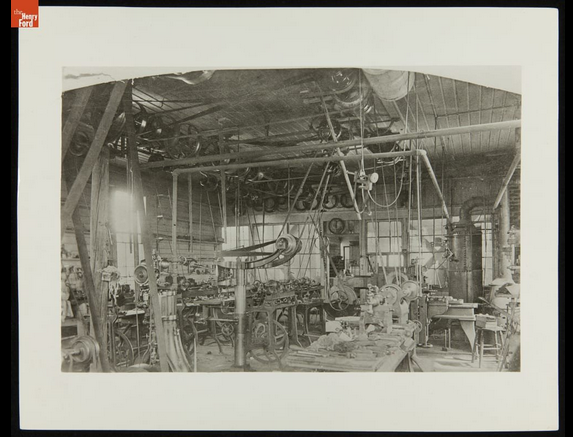
The Office Experiment: An Interview with Neal White
Here’s a short interview chat we had with Neal White on art practices in and out of the lab, the office and more:
Neal White runs the Office of Experiments, a research platform that “works in the expanded field of contemporary art.” The Office employes methods of fieldworks and works with a range of partners including scientists, academics, activists and enthusiasts, and described as exploring “issues such as time, scale, control, power, cooperation and ownership, highlighting and navigating the spaces between complex bodies, organisations and events that form part of the industrial, military, scientific and technological complex.” Neal White is also starting as Professor at Westminster University, London.
This interview, conducted via email in June and July 2016, was set in the context of the What is a Media Lab-project and aims to address the questions of artistic practice, labs and the (post)studio as an environment of critical investigations of technological and scientific culture. Another,longer, interview with Neal White, conducted by John Beck, is published in the new edited collection Cold War Legacies (Edinburgh University Press, 2016).
JP: Can you start by describing what the Office of Experiments does? I am interested in its institutional form in the sense also Gilles Deleuze talks of institutions as “positive models for action” in contrast to law being a limitation on action. The Office also carries the legacy of modern institutional form par excellence – not the artist’s studio with its romantic connotations, not the laboratory either with its imaginary of science, but the office as an organizational site. Why an office?
NW: The Office of Experiments makes art through a process of collaboration in which all of those who undertake research, make or apply thinking to a project can be credited. We bring together artistic forms of research with experimental and academic research in the field, undertaking observational analysis, archival research, road trips, building platforms and prolonged formal visual studies that reflect the complexity of the subjects we approach. Our approach is to build a counter rational analysis or account of the world in which we live. To move this away from any poetic vision, we draw on ideas from conceptual art, and disciplines such as geography and science studies, architecture and political activism, as well as looking at physical space, data, and the material layer which connects the observatories, global sensors etc of our contemporary world; the interface between the technological and material world.
Having some formative education in Digital Arts, an MA in 1997 and then running a successful art and technology group in Shoreditch, London, in late nineties and up to 2001 (Soda), my experiences collaborating with others was critical to how I work now, and the work of others that interests me. As I wanted to deliberately move away from the hermetic space that media / digital art was creating for itself – the Lab, and to set up an independent contemporary art practice, that moved across spaces, enclosures, archives, in and out of galleries, often working in situ, and which was networked, I needed to find a way of working with others that was neither exploitative nor driven by serving another discipline or field.
Having opened conversations with John Latham in 2002-3, the now late British artist, I was introduced to Artist Placement Group. I was strongly influenced at this point both by Latham’s ideas of time/temporality (as applied to institutions) as well as incidental practices, and I applied those in an instituent form (Raunig) as Office of Experiments. The Office was therefore the solution to working collaboratively as an artist in a critical way, so that credit would be spread, and all those collaborating within each project get something out – whether as art or as an academic output/text, relevant to their individual discipline.
I was attracted to the term Office initially as it holds some idea of power, when thinking of a government department or Bureau, but is also instrumental – something that I felt was and is increasingly asked of art (evaluating audiences for funding etc). However, Office alone does not work, it is too close to that which it is critical of, so it is only when used with the term experiment, and the ideas of experimental systems (Rheinberger), which were also key to my work at this time, that an agonistic dichotomy comes to the fore. This works for me, as we could say the terms are counter-productive, the name undermines itself linguistically (i.e. As Robert Filliou put it “Art is what makes life so much better than Art’). In this respect, it serves the ideas that shape our research, to create a form of counter-enquiry that can hold to account the rational logic of hard scientific enquiry, ideas of progress, the ethical spaces of advanced industry and scienc
The link to post-studio practices and discourse is a thread that runs through the projects. Can you talk a bit more about the other sorts of institutional spaces or experiments in and with regulated spaces such as the laboratory that your work has engaged in?
To give some concrete examples, OoE was founded when working on an experimental platform, which was based on the design of a planetary lander, but we designed it for ‘on earth’ exploration; Space on Earth Station (2006), with N55 (DK). Later, OoE challenged the ethical space of clinical research in a project that used restricted drugs to explore ‘invasive aesthetics; The Void’ in which participants urine is turned blue. Our aim to move the site of the artwork to inside the body. We then explored the history of psychopharmacology and the use of so-called ‘truth serums’ in psychology of torture by the US military. More recently the Overt Research project made visible and navigable the concealed sites, laboratories, infrastructures, networks and logistical spaces of the UK’s knowledge complex, part military, part techno-scientific, a post-industrial complex. In Frankfurt, Germany, OoE acquired a piece of network infrastructure, – a cell phone tower in the shape of a palm tree, whilst we researched quantum financial trading networks and conspiracy theories based around Frankfurt itself. Currently, we are working on data from a globally distributed seismic sensor used to monitor the test ban treaty on nuclear weapons, and have used the data (which is not straightforward to acquire) from this vast instrument to create resonant physical audio experiences around what we call hyper-drones. In many of the cases, projects lead to engagements with society and the public on subjects of concern, whilst also providing tools, resources and shared knowledge with other researchers, enthusiasts and artists.
Considering art history and history of science, the studio and the lab can be seen as two key spaces of experimentation and the experiment, following their own routes but in parallel tracks as well. Does a similar parallel life apply to the post-studio, and the post-lab in contemporary context? In your view, what are the current forms that define the lab?
Starting with any lab today, we could perceive a hyper-structure (Morton) – that is a lab networked to other lab space, and not something discrete or visible as an observable object in the singular. To this extent, labs are also entry points connecting physical and digital layers; they reveal regulatory and permission based cultures in which ethics, health and safety, security and received opinion (Latham)/knowledge assert control. The idea of a lab therefore for art or media art, with any kind of techno-scientific logic not only implies but actually enforces limits (Bioart so often falls down in these terms). Whilst a studio gives an artist working within the constraints of their ability/media a private space to think and work, I find both underline both certain kinds of limits and a tradition of building through a controlled approach to both the experiment and experimentation.
In terms of the post-studio / lab, the ‘social’ (Latour) framing of art in the contemporary field of relations, social engagements and critical practices, experiments are produced through a scale of 1;1, but are also modelled in new ways. So this implies, that we not only need to find a new way to work, but to be present somewhere/somehow else.
So, if Office of Experiments projects explore space and time as dimensions of practice, then it is reflective of these shifts, being made up of a group or number of individuals, we are arguably post-studio in form. Where we might be sited is fluid too, but we do share an enthusiasm for working together by being situated in fieldwork, exploring places and non-sites, as well as complex infrastructures, some which are legally ‘out of bounds’ or ‘off limits’. So we have often worked together to produce platforms for research in the field that include methods as much as architectural projects, as well as resources such as archives and databases, to enable our activities to take place.
Whilst the work we have produced is shown inside leading galleries internationally, as performances, video, visual artwork and installation, we have also produced a number of bus tours, installations, temporary monuments and projects beyond these enclosures, in public space, the landscape or framed by urban and suburban life. So the spaces, or non-sites we work in are also the places in which we exhibit the work, including across media – on the scale of 1:1.
However, the idea of a scale of 1:1 I have wrestled with since reading Rheinbergers work on experimentation, as you could argue that it does not apply to the non-material word we inhabit. Perhaps it is more accurate to say, I have been looking at contemporary forms of production, rather than simply experiments, to think about or challenge these models of working as an artist in a social or collaborative context. For example, what happened in the lab can now be modelled inside the computer, across the network etc. And what was fabricated in the studio for the gallery, can be outsourced and produced by artisans to a better standard, or scanned, modelled and printed, for display across a range of spaces, real or not.
Art has therefore been subject to de-materialisation that started in the 1960’s (see Lippard), but as with so much of late capitalism and scientific and computational processes, it is no longer simply invisible but reduced to the indivisible, distributed and then reassembled. And the site of the reassembling is multiple, as are we.
The lab as a symptom
I am giving a talk on Laboratory Fever in Amsterdam later in May and I am currently drafting some notes for that. This talk is part of the larger research and book project with my colleagues Lori Emerson and Darren Wershler, and most of our research process is documented on the What is a Media Lab-website. Below however a short excerpt from the forthcoming Amsterdam talk, and relating to a passage about (culture/humanities) labs as places of making, and the lab as a symptom.
___
In her historical contextualisation of the laboratory (“The Laboratory Challenge”), Ursula Klein puts it in rather clear terms: the laboratory was not merely a place of pure science and before the institutionalisation of the site since the 19th century as part of the scientific set up, it had many artisanal connotations as well. The lab was anyway part and parcel of a set-up of making and things, where knowledge was produced in material settings. Indeed, her interest is articulated relating to this “laboratory tradition that meshed studies of nature with technological innovation.” Now, I wonder, how much could we gain and how far could we venture with the poached idea if we did a sort of a minor tweak and see how it sounds when considering the rhetorical promise as well as conditions how we think of labs in the humanities interested in culture and making?
“The laboratory tradition that meshes studies of culture with technological innovation”. A simple and elegant hack, and an update of the scientific lab to a more humanities one? Acknowledging both the relation to “critical making” and also the nexus of culture and technology? Would this solve some of our problems and establish a seeming relation to the scientific labs as labor and elaboration of nature?
But too easy quips aside, there is something in the ways in which the lab as a site of technological making and artefactuality, in some ways, can be seen relating to the arguments by historians of science. Indeed, have we arrived at a situation where we return to the pre-scientific contexts of experimentation and wonder, where also romantic poetry is pitched as such a mode of experimentation, as Novalis once had it, and cultural realities can also found their sites of tests and experiments? Is the lab the neo-romantic but also the pre-scientific lab – a place of making and apparatuses, a place happy to borrow from the scientific aura of the science lab but not merely as an imitation of that model, but a sort of a institutional move that fits in with the issues of basic funding for departments too? Some might critique it as exactly a nostalgic move: at a time when most technocultural processes seem to be escaping the horizon of phenomenological perception and the tool-making human’s hand, we establish sites of such nostalgic proximity to individual technologies that are merely at most interfaces to the massive planetary level technological infrastructures. And yet, establishing concrete sites might be one way of interfacing not only with technologies but educational possibilities of intervention with that technological reality.
Because of the magnitude of questions “the lab” triggers, the number of separate and distinct labs there exists, and that every lab could produce their own particular answer, I would suggest that it is more fruitful to consider the lab not so much as a solution but as a symptom itself; just like Thomas Elsaesser (2016) recently asked about the discipline of media archaeology the question: instead of what is, we should ask why now? And we can extend the same logic of questioning to labs: not just what is a lab but why now? What is it about the lab not merely as an internal place of new methods or new forms of creative or academic activity but as a fold between such techniques and external political and economic conditions of current institutions that makes it a symptom? What are the sort things that temporalise this spatial setting as a question of the now – a question that defines it as a contemporary setting for particular experiments in not only academia or creative industries, but in “political anthropology of new institutional forms” to use Brett Neilson and Ned Rossiter’s ideas.
Mediaarthistories in Montreal: Re-Create
I will be taking part in the Mediaarthistories 2015 conference soon (in November) in Montreal. Under the title Re-Create the event promises to be several days of exciting panels again with a good emphasis on practice-based research. We are participating with a panel on labs in humanities and media studies, addressing the practice and contexts of this interdisciplinary trend (incidentally, with Lori Emerson and Darren Wershler we are also working on a book and a project on labs; we will be also talking about this at Concordia University).
In addition, the same day (Saturday 7th of November) we are with Joasia Krysa and Perttu Rastas launching the Erkki Kurenniemi-book that came out with MIT Press! This is one of several launch events. Please join us and come hear more whether about labs or Kurenniemi!
The programme of the conference is online here.
Lab Work in Linköping
On Thursday, I am one of the participants in a symposium on labs in the humanities and media archaeology. In Linköping (Sweden), the event organised by Jesper Olsson addresses the question of institutional forms of media and humanities work.
 It is an exciting event for many reasons, andit is a good platform for some of the ideas me and Lori Emerson together with Darren Wershler have been thinking about relating to the genealogies and current institutional forms of the lab in digital humanities but also in those practices (such as Media Archaeology) that border digital humanities and might help to extend its reach to address the material cultural reality.
It is an exciting event for many reasons, andit is a good platform for some of the ideas me and Lori Emerson together with Darren Wershler have been thinking about relating to the genealogies and current institutional forms of the lab in digital humanities but also in those practices (such as Media Archaeology) that border digital humanities and might help to extend its reach to address the material cultural reality.
Indeed, in a recent interview I conducted with Wolfgang Ernst, he underlined that we also need to address the “humanities of the digital” that could then offer also a longer historical trajectory to the question of technology in humanities theory and pedagogy. This would also include a reflection on the specific institutional sites for such scholarly activity. It also continues my interest in “techniques and practices of theory”.
A follow-up to the Linköping discussions is organised as part of the Media Art Histories 2015 event in Montreal in November where we have a panel on this topic of labs across digital humanities, media archaeology and more.





